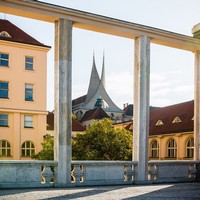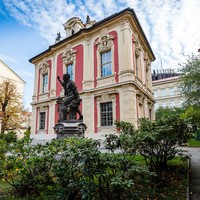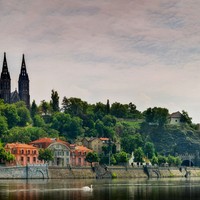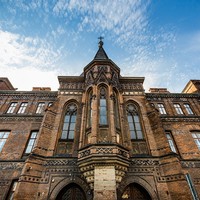Breadcrumbs navigation
Autumn walks through Prague’s New Town offer atypical views of the city
The New Town, whether flooded with autumn sun or covered with clouds, is wonderful for pleasant walks through impressive monuments full of old stories and visiting places with a unique romantic view of the "mother of cities".
This part of the city has a certain atmosphere while still retaining its historical heritage. The city was founded by Emperor Charles IV in the 14th century as part of his grandiose plan to build the spiritual and cultural center of Europe, a “New Jerusalem” in Prague; and indeed, if we compare period maps of the two cities, we find that they correspond in at least 20 points.
Start a relaxing “continuously downhill” walk at the I.P. Pavlova metro station. Take Na Bojišti Street to Ke Karlovu Street, where there is a baroque summer house called “Amerika” - it’s the home of the Antonín Dvořák Museum. The charming building is surrounded by a garden with statues by Matthias Bernard Braun. The museum is open daily except Mondays.
From here, it’s a short walk to the St. Apollinaris Provincial Maternity Hospital . The building, noticeable from afar and built in the English style from terracotta fired bricks, still serves as a maternity hospital. The first report of a child born here was recorded in the Národní listy newspaper as early as 1875.
After a few steps you can enter the complex of the Church of the Assumption of the Virgin Mary and St. Charles the Great. Founded in the 14th century by Charles IV, the church, with its Augustinian monastery, has undergone many reconstructions during its history. The Police Museum of the Czech Republic is now located here.
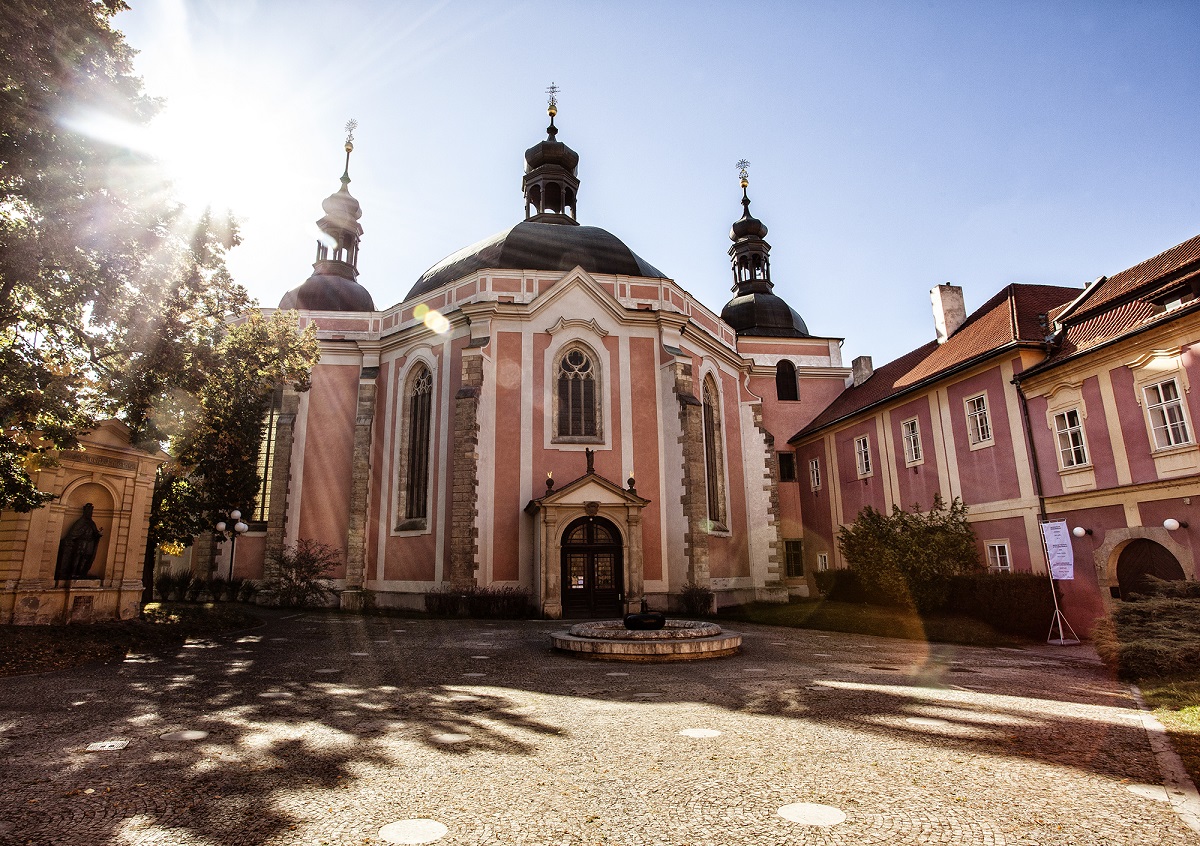
Just below the church is the bastion, a place with a unique view of Vyšehrad and the Petřín observation tower. The bastion was part of the fortifications of the New Town of Prague. Recently, it was sensitively adapted to a modern form.
Take Horská Street around Folimanka Park to Na Slupi Street. From here you can continue to Vyšehrad or towards Charles Square. Along the way you’ll pass by the Botanical Garden of Charles University in Prague. This small in size, yet important university garden with greenhouses and outdoor exhibits has a lot to offer - whether you’re looking for a place to relax in this busy part of town or want to see one of the exhibits.

Slightly uphill along Vyšehradská Street, you will reach one of the city's prominent landmarks - the Na Slovanech Monastery (Emmaus). Its two unmistakable slender steeples rise into the sky, their graceful geometry contrasting with the horizontally oriented buildings that surround it. The modern character of the steeples is all the more interesting because it belongs to a medieval building complex. The monastery, founded in 1347 by Emperor Charles IV, was part of a system of other sacral buildings that formed the shape of a cross on the map of the New Town. The monastery is known in particular for its frescoes from the 1960s that depict scenes from the Old and New Testaments.
The architectural mosaic of Prague is one-of-a-kind, in part due to the fact that Nazi-occupied Prague, unlike many other European cities, was not significantly bombed during World War II. But the city was not spared completely. On February 14, 1945, Prague was the target of a raid by 62 American bombers, which dropped 250 bombs on an inhabited part of the city. The raid, however, was carried out by mistake - the intended target was Dresden, but the bombers that took off from the base in Great Britain lost their orientation in the thick fog and navigation also failed.
The Na Slovanech monastery was also severely damaged. Two-thirds of the church’s vault collapsed, the building burned down, and the north tower was completely destroyed (photographs showing the condition of the monastery after the raid are on display in the cloister of the monastery). Extensive repairs were made in the following years. One of the architectural challenges was the completion of the façade, which was again to become the dominant feature of the New Town skyline. The architectural competition was won by an innovative project by architect František Maria Černý, in which two concrete triangles intersect with gilded spikes. If you take a closer look, you’ll notice a small detail - one of the towers is a bit smaller and more subtle. It’s an element inherited from medieval cathedral architecture. The more powerful tower symbolizes the masculine principle, and the narrower and slightly smaller one the feminine principle. The addition was not completed until 1968.
A short distance away, Charles Square, the largest square in Prague and one with a remarkable history, will open before you. Today, most of the space is occupied by a large park with mature trees, flower beds, statues and a fountain. The north side of the square is dominated by the Gothic New Town Hall. This building has a turbulent history - among other things, the first defenestration of Prague took place here in 1419, which led to the start of the Hussite wars. From the town hall tower, you’ll get a beautiful view of the city. There are several remarkable buildings in the area, including the Baroque Orthodox Church of Sts. Cyril and Methodius with a National Monument to the heroes of the Heydrich Terror.
If the weather is nice, head down from the square to the Vltava River and enjoy the rest of the day at Náplavka, where regular culinary and cultural events take place, or just hop on the metro and let yourself be taken to the warmth of your home or to the train station. You can get to Prague not only easily, comfortably but also cheaply.
text and photos: Prague City Tourism
